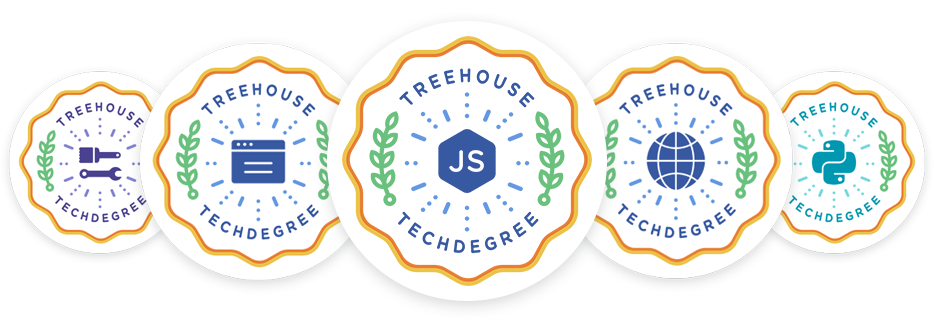A site’s copy is one of its most important elements — especially in the world of eCommerce. And in eCommerce one of the worst mistakes a copywriter can make when writing is to concentrate only on product descriptions. While product descriptions are important, they’re only the tip of the eCommerce copy iceberg. After all, an eCommerce site is everything at once for an online retailer — simultaneously serving as a catalog, store, marketing tool, and company information source — and the copy responsible for selling both your product and your company in the highly competitive web marketplace is at the center of it all.
There are three basic types of writing that an eCommerce copywriter will use while copywriting for a retail site: informational, marketing and notification. While the details of each type could fill a book, we’re only going to cover the basics of each here — once you understand the fundamentals you’ll be ready to raise your store’s copy to a new level.
Contents
Setting Your Tone
Before we begin, here are a couple of concerns you’ll need to address as you sit down with your catalog and bang out brilliant eCommerce copy:
- It’s important to understand your products’ target audience before you begin writing. Who, exactly, are you writing for? Grandmothers? Artists? Technophiles? For example, a store that wants to become the ultimate gear source for teenage snowboarders wouldn’t use the formal writing style of a site that appeals to middle-aged businessmen. You’re always writing for someone else, and you’ll keep your copy focused by not forgetting who they are.
- Once you’ve identified your copy’s target audience, decide how to appeal to that audience. Here’s where your company’s personality has a chance to shine through, setting you apart from your competitors. Remember, even though your competitors sell similar products, they aren’t you.
So decide who you are. Do you want to be considered glamorous? Hip? Maternal? Consider the Mac vs. PC ads that have been wildly successful for Apple over the last couple of years. In just a few seconds, the commercials immediately establish that Apple products are intuitive, user-friendly, and cool. They appeal to a certain audience in a unique way, and immediately set themselves apart from every other computer company on the market.
This is what you’re trying to do with your copy. Decide who you are, and embrace it. Use this identity to establish a tone for all of the copy throughout your site, down to the smallest error message. Each piece of copy is an opportunity to broadcast your brand — don’t waste any of them.
Information, Marketing and Search Engine Optimization
Now that you have established your store’s tone it needs to be applied to the three main styles you’ll use while writing. Informational copy is the copy you’ll often find in a site’s frequently-asked questions section and customer service blurbs. All of these examples share a common thread: The customer is looking for to-the-point information. Concentrate on avoiding flowery language or fluff copy; after all, filler can frustrate potential customers. Focus instead on keeping your writing straight-forward and uncluttered, making sure that the information an average customer would want to know is easily accessible and clearly explained. Remember, “straight-forward” isn’t the same as boring. You’re still writing for the audience that you identified when you sat down to write, and if you target that audience with a consistent tone your informational copy will align itself with your store’s brand and image.
Another type of copy, marketing, is mainly used in promotional materials and product descriptions. While this type of copy is extremely common, it’s also some of the hardest to write. Many eCommerce sites fall into a trap of confusing a barrage of positive adjectives with selling a product. Don’t make this mistake! Relying on clichés will only weaken your copy and, consequently, your brand.
Pause and consider your goals. You identified who your copy is for during the earliest stages of your writing; now you can focus on what you’re trying to achieve with it. Customers are at your store to fill a need, and you must convince them that you’re best able to help them. Enhance your informational writing by highlighting your product’s benefits for potential customers, rather than repeatedly exclaiming to them that you’ve got a great product to offer. You want a customer to take action on your site — convert, sign up for your newsletter, etc. — so tell them exactly why they should take that action, and use effective copy to provide them with the information they need.
Don’t forget to consider search engine optimization when you’re writing both your informational and marketing copy. Search engine optimization is a huge part of writing for eCommerce, and you’ll want to try and familiarize yourself with the basics. Start by doing some keyword research to find out what potential customers are looking for, and what language might attract them. Incorporate these throughout your site’s copy, but don’t forget to keep your tone and audience in mind! The best eCommerce copy has its SEO keywords smoothly integrated so the average customer doesn’t think twice. Don’t bog your copy down by trying to pack keywords where they don’t belong.
Good and Bad eCommerce Copywriting
Here’s an example of both good and bad product descriptions. Each of them is a combination of informational and marketing copy. Imagine that you’re a small business writing this product description for both new and repeat customers, and you want to maintain a polite, welcoming tone:
BAD: This newest model of the Sock-Saver 2007 is better than ever before! If you liked the Sock-Saver, you’ll love the Sock-Saver 2007. For the last year, we’ve been examining your feedback and implementing it into this great product. Now we’ve brought these changes to you in the form of the Sock-Saver 2007! Save more Socks!
Not only is this description fluffy and poorly organized, but it offers no real information to the potential consumer. What are the upgrades? Why would owners of the Sock-Saver want to upgrade to the 2007 model? Also, there’s no clear tone or audience established, which makes the description seem cluttered and ill-placed.
GOOD: We’ve examined vendor and customer feedback for our most popular product during the past year and discovered that buyers wanted more room in the main compartment, larger drainage holes, and a choice of colors to match a home or business. We’re now proud to present the Sock-Saver 2007. The newest Sock-Saver offers all of the missing sock protection of the original, enhanced with the customer-driven features outlined above. Just stuff the Sock-Saver full of socks, toss it into the washer and dryer, and never suffer from one-sock syndrome again!
If you’re a current owner of our original product, send in a photo of you loving your Sock-Saver for a 15% discount on the Sock-Saver 2007.
Notice how the tone of the example above maintains the company’s commitment to its repeat customers, as well as providing plenty of information for new customers. It carefully outlines the improvements that they’ve made to the product, explains how to use it, and offers a number of incentives for all customers to take action and buy the product. The benefits are clearly outlined in a way that is exciting for the customer, and maintains the tone that the writer has selected for the site.
Turning a Dead End Into an Intersection
So now you’ve got some great product descriptions, marketing materials, and a customer service page under your belt. What happens to your customer when they stumble upon a dead link somewhere in your site, need to know a credit card was accepted or make a mistake during checkout? This is where the last style, notification, comes in. Customers will need to be notified when they complete actions and no matter how great your site’s usability is, mistakes will be made, causing your customers to encounter positive and negative notification messages. Make sure that these messages don’t slow customers down, keeping them clear, concise and helpful. In error messages, quickly identify the problem, tell the customer what the error is, and how they can fix it.
Follow these same principles for your 404 page. Explain what the visitor is seeing on the page, taking care to keep your tone consistent with the rest of your store. Outline a list of common mistakes that might have brought them to the page, and offer helpful links to other parts of your store, as well as an e-mail link so that a customer can report a problem. Unhelpful notifications abandon customers at a time when they need help, and they are likely to return the favor by abandoning your site. With both notification messages and 404 pages, keep the personality of your site intact, and focus on the positive — i.e., how you and the customer can work together to accomplish what they need.
Your site’s copy is the key to your brand and company identity. Keeping quality in mind throughout all written aspects of your site will help ensure that you’ll never have to reevaluate whether your customers “get” you and your store. Let them know that you’re more than the sum of your product descriptions!








Wow it is amazing.I think I should try it into my Ecommerce Website so that it can get a lot of visitors..
Thanks for this blog.I’ll share it with my friends.
I like this article. You really need effective and professional copywriting for the target audience and possible customers.
Informative article. Tone is such an important part of copywriting as is the style. If you neglect either of these when sitting down to write your article then you shouldn’t call yourself a copywriter, in my opinion.
Thanks! Very much has helped.
eCommerce one of the worst mistakes a copywriter, eCommerce site is everything at once for an online retailer